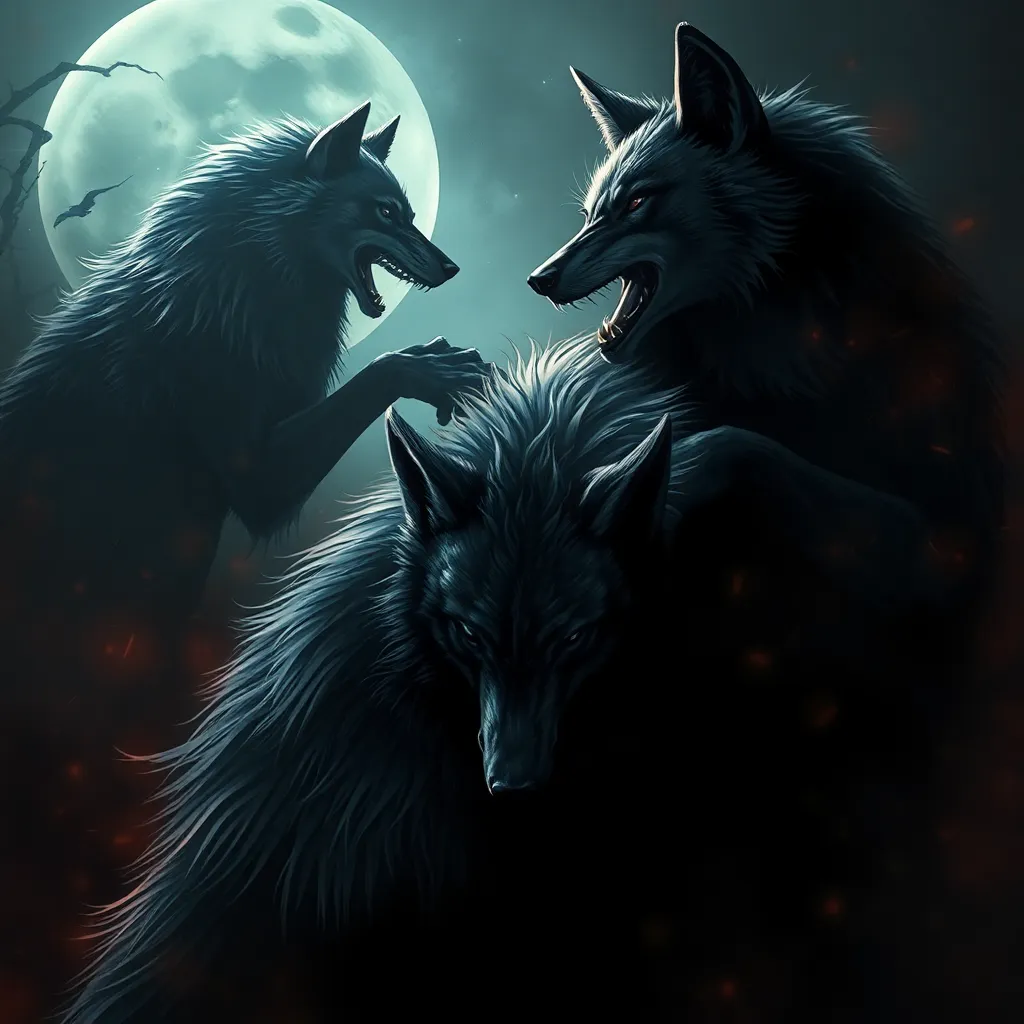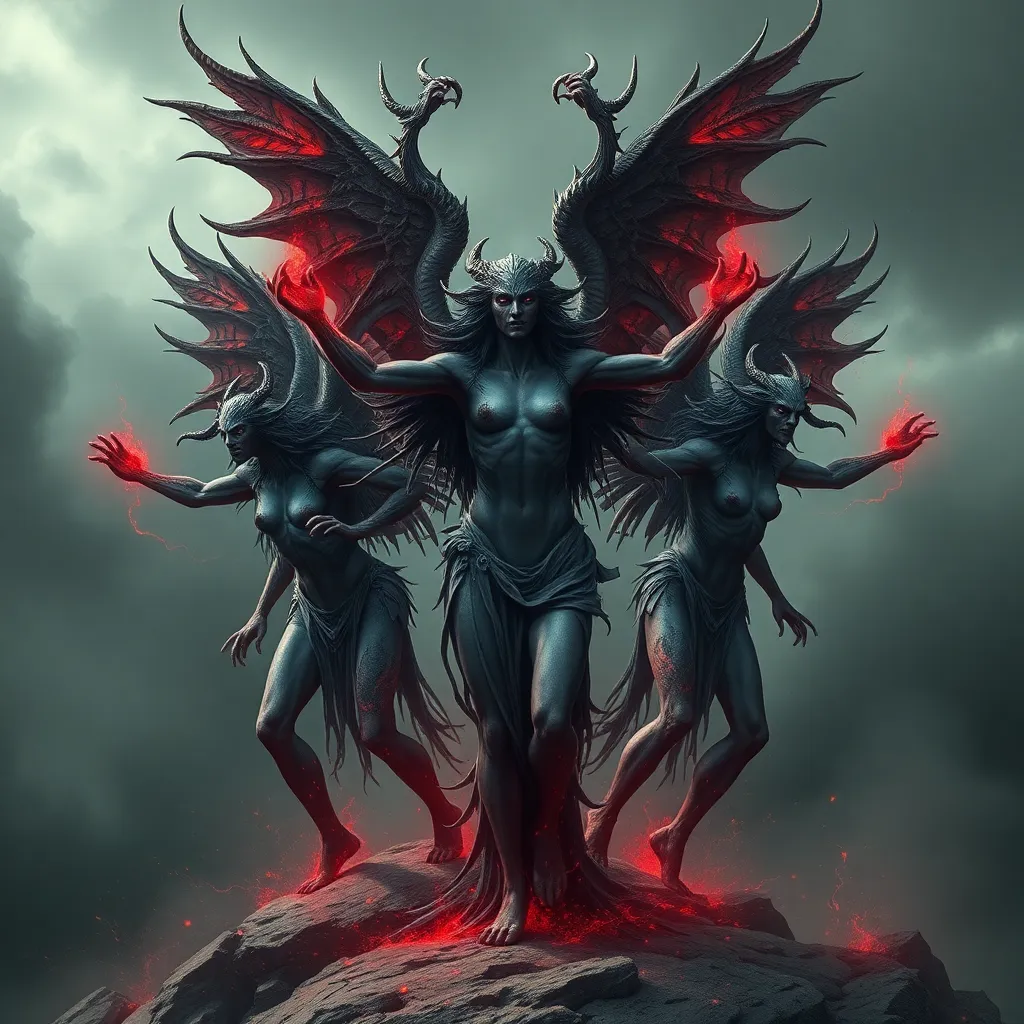Skinwalkers: The Haunting Truth Behind Shapeshifting Myths
I. Introduction
Skinwalkers are one of the most intriguing and chilling figures in Native American folklore, particularly within Navajo culture. Defined as witches who have the ability to shapeshift into various animals, skinwalkers embody a blend of fear, mystery, and cultural significance. Their lore serves not only as cautionary tales but also as reflections of the values and beliefs of the communities that tell them. This article aims to explore the truth behind the myths of skinwalkers, examining their origins, characteristics, cultural impact, and the psychological dimensions that accompany these haunting legends.
II. The Origins of Skinwalker Legends
The roots of skinwalker legends lie deeply embedded in the historical context of Navajo culture. Traditionally, skinwalkers are associated with witchcraft and are believed to be individuals who have committed grave sins, such as murder or betrayal. This dark power allows them to transform into animals, using their abilities for malevolent purposes.
Stories of skinwalkers are often passed down through generations, and they serve as moral lessons, warning against the pursuit of power at the expense of community and ethics. In contrast to other cultures that feature shapeshifting myths—like the werewolves of European folklore or the skin-changing gods of Norse mythology—skinwalkers are uniquely tied to the Navajo worldview, intertwining spiritual beliefs with the fabric of daily life.
III. Characteristics and Abilities of Skinwalkers
Skinwalkers are characterized by a number of traits that set them apart from other mythical beings. Common characteristics include:
- Ability to shapeshift into various animals, such as wolves, coyotes, or bears.
- Possession of supernatural speed and agility.
- Use of dark magic and witchcraft to inflict harm or instill fear.
In addition to their animal forms, skinwalkers are said to have the ability to mimic human voices, luring victims into traps. Their transformation is often depicted as a painful and horrifying process, emphasizing the negative connotations associated with their powers. The role of witchcraft in skinwalker lore underscores the cultural belief that individuals can misuse their gifts for evil intentions, thereby reinforcing community norms and values.
IV. The Cultural Impact of Skinwalker Myths
Skinwalker myths have not only persisted in oral tradition but have also significantly influenced literature and popular culture. Their representation in various media forms has contributed to a growing interest in Native American folklore. Key aspects of this influence include:
- Literature: Many authors have incorporated skinwalker themes into their novels, exploring the intersection of horror and cultural identity.
- Film and Television: Skinwalkers have appeared in movies and TV shows, often portrayed as terrifying antagonists that embody the unknown.
- Community Impact: The myths can serve to reinforce cultural identity among Native communities, acting as a reminder of their rich heritage.
However, this cultural impact is not without its complications, as the sensationalism in mainstream media can sometimes lead to misunderstandings about the beliefs of Native peoples.
V. Personal Accounts and Eyewitness Testimonies
Many individuals claim to have encountered skinwalkers, sharing their stories as both frightening experiences and cautionary tales. These personal accounts often include descriptions of strange sounds, sightings of unusual animals, or feelings of being watched. A few notable anecdotes include:
- A rancher who observed a large wolf-like creature that displayed human characteristics.
- A family that reported hearing their deceased relative’s voice calling out from the woods.
- Campers who felt an overwhelming sense of dread while in the presence of a nearby animal.
While these accounts are compelling, they invite skepticism and analysis. Some critics argue that fear and cultural storytelling can lead to misinterpretations of normal wildlife behavior or psychological phenomena. Nonetheless, these narratives play a crucial role in perpetuating the skinwalker mythos, illustrating the powerful impact of fear and storytelling within communities.
VI. Psychological and Sociological Perspectives
The belief in skinwalkers can be analyzed from psychological and sociological perspectives. Psychologically, the fear of skinwalkers may stem from deep-rooted anxieties about the unknown and the potential for betrayal within one’s community. This fear can manifest in various ways, including:
- Paranoia about personal safety.
- Heightened sensitivity to environmental cues.
- The creation of a shared cultural narrative that reinforces community bonds.
Sociologically, the myths serve as a mechanism for social control, reinforcing norms and values within the community. They reflect historical traumas and collective fears, offering insights into the human experience of fear and the desire for safety. The interplay between trauma and mythologizing can provide a lens through which we understand the significance of these legends in contemporary society.
VII. Debunking Myths: Science vs. Superstition
Examining skinwalker sightings through a scientific lens can offer alternative explanations for these phenomena. Many reported encounters can be attributed to:
- Common wildlife behavior misinterpreted in a fearful context.
- Psychological conditions that may cause hallucinations or heightened senses in stressful situations.
- Environmental factors, such as shadows and sounds in the wilderness that create illusions of otherworldly beings.
While it is crucial to approach these sightings with a rational mindset, it is equally important to respect and acknowledge the cultural beliefs that underpin these legends. Folklore can coexist with scientific reasoning, and understanding this interplay helps to bridge the gap between cultural heritage and modern perspectives.
VIII. Conclusion
The myths surrounding skinwalkers reveal haunting truths about human fears, cultural identity, and the complexities of belief. These legends continue to resonate within contemporary society, serving as reminders of the power of storytelling and the significance of cultural heritage. As we navigate the interplay between myth and reality, we gain a deeper appreciation for the cultural narratives that shape human experience and understanding.
Ultimately, skinwalkers serve as a lens through which we can explore our fears, our histories, and the rich tapestry of human culture.



